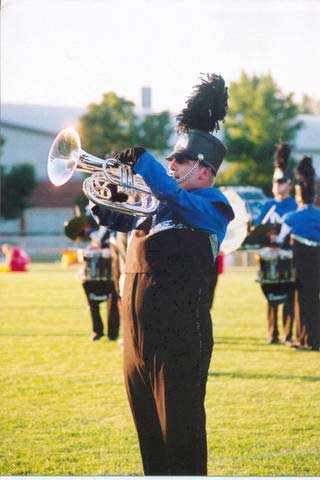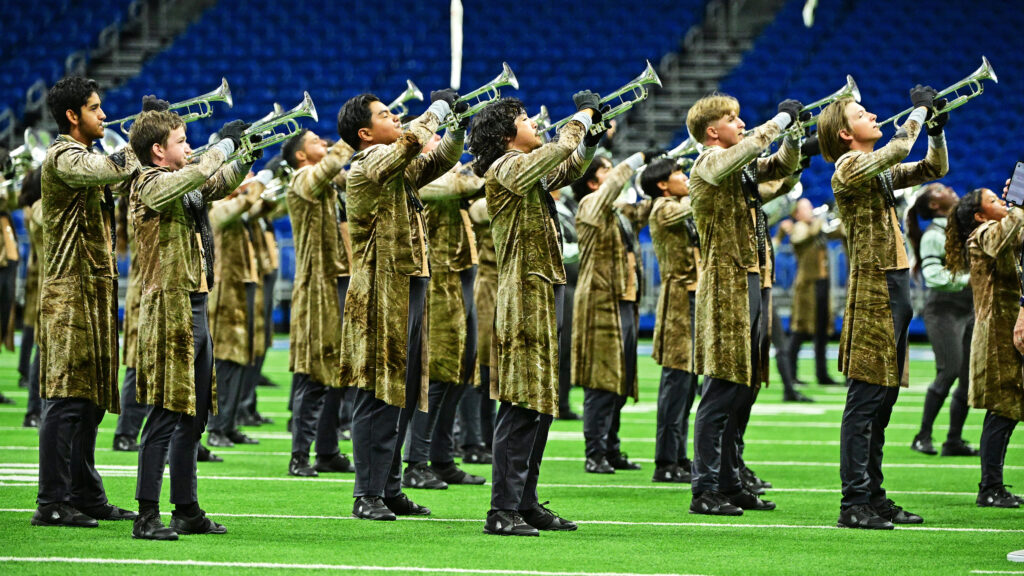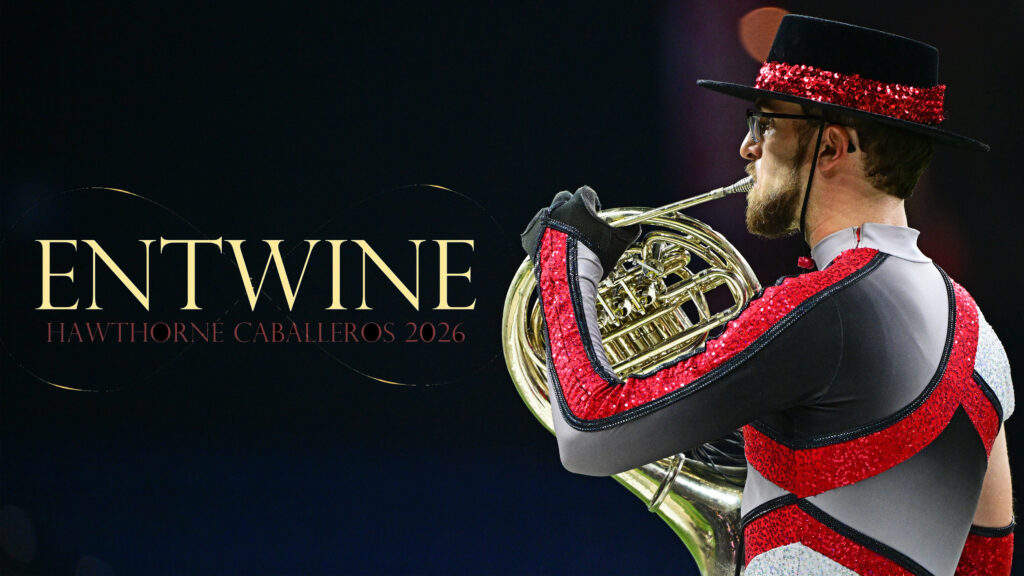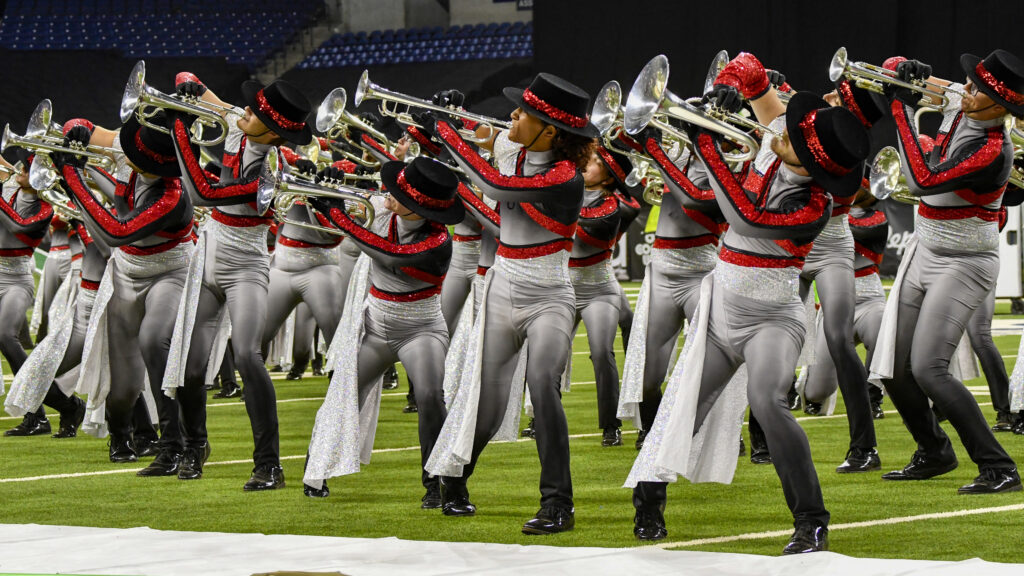David Anderson, a member of Minnesota Brass senior corps and a former member of Colts, has a most unique story that is appropriate for this Thanksgiving weekend. Let’s hear about it from him. I was born with a birth defect condition named arthrogryposis. It basically boils down to fact that the tendons in my arms and wrists were formed shorter than average prior to birth, resulting in greatly reduced flexibility and range of motion in my right arm. This leads me to do some things left-handed. My childhood, however, was actually fairly normal. I played football and baseball through most of elementary school and junior high.

I first started playing an instrument, like most kids, in early elementary school. Of course I wanted to be a drummer — I mean, what kid didn’t? But there were already too many kids signed up to play drums, so I chose the only other instrument I could physically play, the trombone. I was hooked! And heck, I was even good! High school came around and aside from playing trombone in symphonic band, pep band, jazz band and marching band, I also joined a new activity to the school, the winter drum line. As part of the instruction for us, we were shown Blue Devils videos and told, “This is how you should march” and “This is how you should play.” We never saw a whole show or even were told what drum corps was, so I was still clueless. During the summer of 1996, our drum line took a trip to the Minnesota Brass home show in Hastings, Minn., and I was in awe at what I saw. But I still didn’t really know what drum corps was, other than being loud and exciting. I was handed a little recruiting information by the corps and filed it away. A few days after that show, I wrote a letter to Minnesota Brass telling them that I really wanted to play in their group, but I was a trombone player. I proceeded to ask a bunch of questions like, “Why don’t you have any trombones?” I received a response fairly quickly, with answers to all my questions and an invitation to stop by a rehearsal. The following summer I took them up on their offer and stopped by a rehearsal, and after some playing around with horns I determined that a piston rotary horn had potential. However, due to the way I had to hold it, the rotary valve was on the wrong side for me and the horn was extremely heavy for a trombone player. That fall, I headed off to college and was determined to march the following summer, in 1998. I was given an Olds Ultratone PR baritone by the corps and corps director Gavin Burnham told me to do whatever I needed to do to it to make it work. I took it in to an instrument repair shop and worked with them for some time before I got something that worked pretty well for me; a metal extension bar soldered onto the rotary trigger in an “L” shape so I could play the valve with my left thumb and the trigger with my right. Fast-forward and I’m finishing my second year of senior corps and am thinking seriously of doing junior corps for a summer after seeing so many great shows in 1999. I was able to play with Minnesota Brass in exhibition at DCI World Division I semifinals in Madison, and watched Division I finals. Financially, it was going to be a little tight, so I focused on the corps that I could drive to for camp. I wanted some reassurances from any prospective corps that I’d have a legitimate chance of making the horn line while playing a chrome piston-rotary horn in a corps of three-valve silver horns. I communicated with the brass staff of one Division I corps for a while and the best I could get was, “We’ll have to see how it fits with the sound.” I did some pricing around to see what it would cost to get my horn silver-plated, but it was far out of my price range. After mulling around my options for a while, I made an audition tape and mailed it to the Colts brass staff. I seriously hope all copies of this tape have been destroyed because it was very poorly made and extremely embarrassing. However, the Colts’ staff was impressed with me marching around by myself in a snow-covered parking lot in January and formally invited me down to Dubuque. I had a great time that summer marching Colts and don’t regret a minute of my time spent there. All of the members were great and quite often during retreat, members of other corps wanted to check out my horn. So when it was announced last fall that Minnesota Brass was going to B-flat horns for the 2005 season, I didn’t know what to think or do. There are certainly many other parts of the corps that I could have been in without playing a horn. I was picturing being one of the drum majors or maybe on the visual or horn staff. All of those alternatives would have appealed to me in my eighth year of drum corps. Thankfully, I didn’t have to fantasize long before I was told that corps director Brent Turner had contacted Dynasty about my case and the company wanted to work with me and build a custom three-valve baritone horn. The process, however, took much longer than initially anticipated. I met with some Dynasty people and discussed what I thought would work for me. They took notes and a few pictures and measurements for their own use. A few months later I got the first version of the horn. I played with it a bit, but it was too unwieldy, so I wrote down some modifications and sent the horn back. Finally, after months of work I had a complete horn, but the first show was only a week away. I still hadn’t played a lick of music and this horn was extremely heavy compared to my old one. When you add two valves and additional tubing, an instrument gets heavier. That first week with the new horn was a very trying and frustrating time. I was having a difficult time holding up the horn, my fingers weren’t moving through the valves as gracefully as I’d hoped, and I was starting to doubt everything about the horn and myself. I had used my thumb for the modified piston-rotary horn I had been playing, and now I was using three fingers in a way they had never been used. I spoke with my section leader and the brass and visual staff in frustration and told them that maybe I should just use my old horn for the remainder of the season and start with the new horn next season. After some reassurance from them and further discussion, I decided that I needed to keep using the new horn; diverting back to my old one would only be counterproductive. So, I pushed forward and defeated obstacles that were holding me back. I took control of the horn, rather than it taking control of me. It was a steep learning curve for me, but the horn is designed well and sounds great. I’m impressed with the workmanship Dynasty put into it. I still have progress to make, however, and hopefully each year it will become easier and easier to play. I thank everyone associated with Minnesota Brass for their unending support and patience and I thank Dynasty for their willingness to create a specially designed instrument to help me continue to do this activity that I love.
Michael Boo has been involved with drum and bugle corps since 1975, when he marched his first of three seasons with the Cavaliers.
He has a bachelor’s degree in music education and a master’s degree in music theory and composition.
He has written about the drum corps activity for over a quarter century for publications such as Drum Corps World, and presently is involved in a variety of projects for Drum Corps International, including souvenir program books, CD liner notes, DCI Update and Web articles, and other endeavors. Michael currently writes music for a variety of idioms, is a church handbell and vocal choir director, an assistant director of a community band, and a licensed Realtor in the state of Indiana. His other writing projects are for numerous publications, and he has published an honors-winning book on the history of figure skating. His hobbies include TaeKwonDo and hiking the Indiana Dunes. But more than anything, Michael is proud to love drum corps and to be a part of the activity in some small way, chronicling various facets of each season for the enjoyment of others.
He has a bachelor’s degree in music education and a master’s degree in music theory and composition.
He has written about the drum corps activity for over a quarter century for publications such as Drum Corps World, and presently is involved in a variety of projects for Drum Corps International, including souvenir program books, CD liner notes, DCI Update and Web articles, and other endeavors. Michael currently writes music for a variety of idioms, is a church handbell and vocal choir director, an assistant director of a community band, and a licensed Realtor in the state of Indiana. His other writing projects are for numerous publications, and he has published an honors-winning book on the history of figure skating. His hobbies include TaeKwonDo and hiking the Indiana Dunes. But more than anything, Michael is proud to love drum corps and to be a part of the activity in some small way, chronicling various facets of each season for the enjoyment of others.





